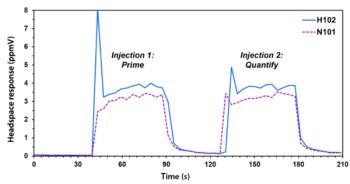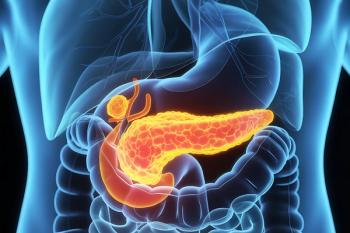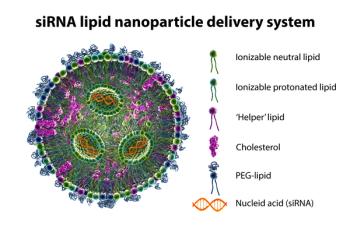
- The Column-12-15-2014
- Volume 10
- Issue 22
Detecting Nerve Agent Exposure
Scientists at the Norwegian Defence Research Establishment (Kjeller, Norway) are working in collaboration with the University of Oslo (Oslo, Norway) to develop new methods to detect the illicit use of nerve agents. In a recent study published in the journal Analytical Chemistry, the team presented a novel method for the quantification of nerve agent metabolites in human serum and urine by combining salting-out assisted liquid–liquid extraction (SALLE) and on-line solid-phase extraction–liquid chromatography–tandem mass spectrometry (SPE–LC–MS–MS).
Scientists at the Norwegian Defence Research Establishment (Kjeller, Norway) are working in collaboration with the University of Oslo (Oslo, Norway) to develop new methods to detect the illicit use of nerve agents. In a recent study published in the journal Analytical Chemistry, the team presented a novel method for the quantification of nerve agent metabolites in human serum and urine by combining salting-out assisted liquid–liquid extraction (SALLE) and on-line solid-phase extraction–liquid chromatography–tandem mass spectrometry (SPE–LC–MS–MS).1
Nerve agents are one of the most lethal chemical warfare agents; the most commonly known are sarin, soman, tabun, GF, and VX. Belonging to the family of organophosphates, they exert their toxicity by disrupting the mechanism of nerve message transfer to organs.1 They are fairly simple to manufacture and can either be ingested, inhaled, or absorbed through the skin with lethal effect. The stockpiling and use of nerve agents is banned by the Chemical Weapons Convention, which was established by the Organization for the Prohibition of Chemical Weapons, but there are still reports of their use as a weapon. Lead author Bent Tore Røer told The Column: “The motivation for the present study was the need for a more rapid, but still sensitive method for determination of nerve agent biomarkers in serum and urine (most present developed methods require several hours of sample preparation). Rapid determination of the biomarkers is of prime importance to guide medical countermeasures in emergency cases where military personnel or civilians (for example, in terrorist actions) are exposed to nerve agents.”
On entering the body, nerve agents are broken down into different alkyl methylphosphonic acids (AMPAs) that then slowly breaks down to methylphosphonic acid (MPA). The primary metabolites can be specific to certain nerve agents, but biomarkers are rapidly excreted from the body within 1–2 weeks. Røer told The Column: “In conflicts with suspected use of chemical weapons, biological samples from survivors may not be available until several days to weeks after the incident, as was the case in the UN inspection to investigate allegations of the use of chemical weapons in Syria, 2013.”
Samples of urine and serum spiked with ethyl, isopropyl, isobutyl, cyclohexyl, and pinacolyl methylphosphinc acid were prepared using SALLE, requiring no more than 10 min sample pretreatment time. The samples were then analyzed by performing on-line hydrophilic interaction liquid chromatography (HILIC) SPE–LC–MS–MS. According to the paper, the time from receiving a sample to determining nerve agent exposure was under 30 min and the LOD was 0.04–0.12 ng/mL. Røer told The Column: “Further, the selective pre-concentration of the biomarkers on zirconium dioxide coupled on-line to LC–MS–MS gives method sensitivity comparable to the most sensitive existing method (if using a triple quadrupole MS like the others, our method would probably be the most sensitive). We believe that the combination of SALLE and on-line SPE–LC–MS–MS could be employed for many types of biomarkers, and thus has a wide application.”
Røer is now working on the write-up of his PhD thesis, but says that in the future, research will focus on using the novel combination of SALLE and on-line SPE–LC–MS–MS to determine other types of chemical warfare agents. - B.D.
Reference
1. B.T. Røen, S.R. Sellevåg, and E. Lundanes, Analytical Chemistry DOI: 10.1021/ac503408x (2014).
This story originally appeared in The Column. Click
Articles in this issue
about 11 years ago
Application of Silica Monoliths for Bioanalysisabout 11 years ago
Vol 10 No 22 The Column December 15, 2014 North American PDFabout 11 years ago
Vol 10 No 22 The Column December 15, 2014 Europe and Asia PDFabout 11 years ago
Metabolic Profiling of Teaabout 11 years ago
Speeding Up Drug Metabolism Screeningabout 11 years ago
Chiron and Kura Biotec Sign European Distribution Dealabout 11 years ago
Environmental Speciation Analysis Using Ion Chromatographyabout 11 years ago
Instrumental Innovations 2014Newsletter
Join the global community of analytical scientists who trust LCGC for insights on the latest techniques, trends, and expert solutions in chromatography.





